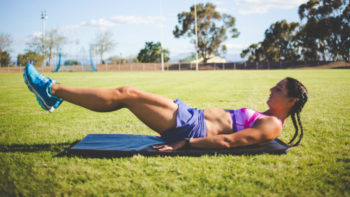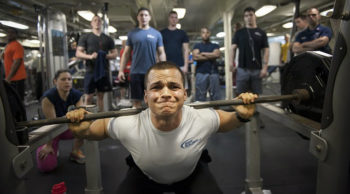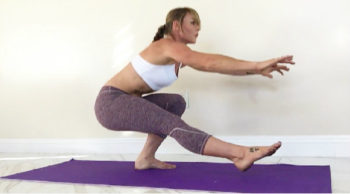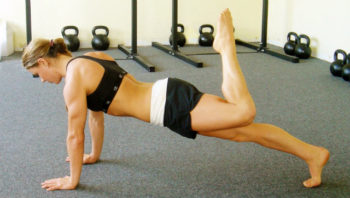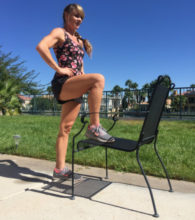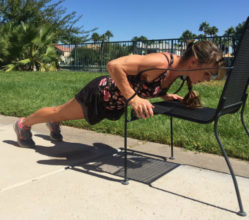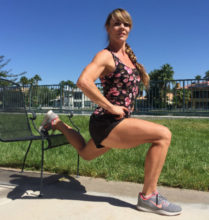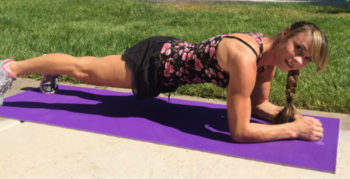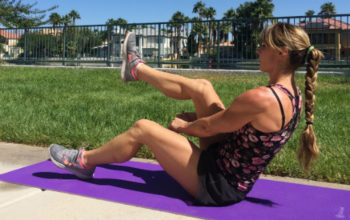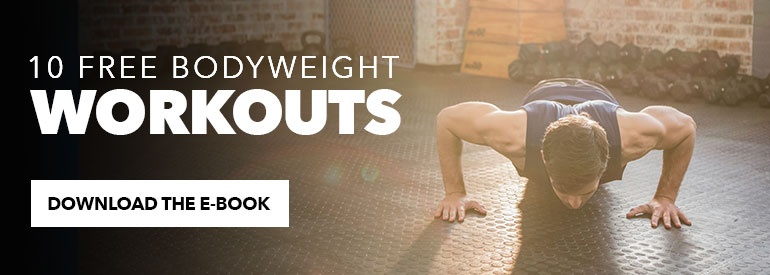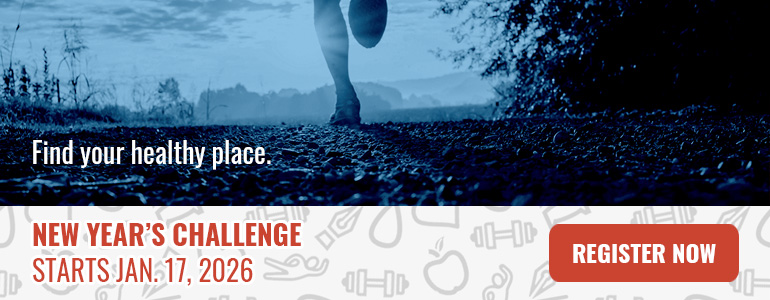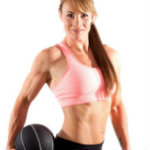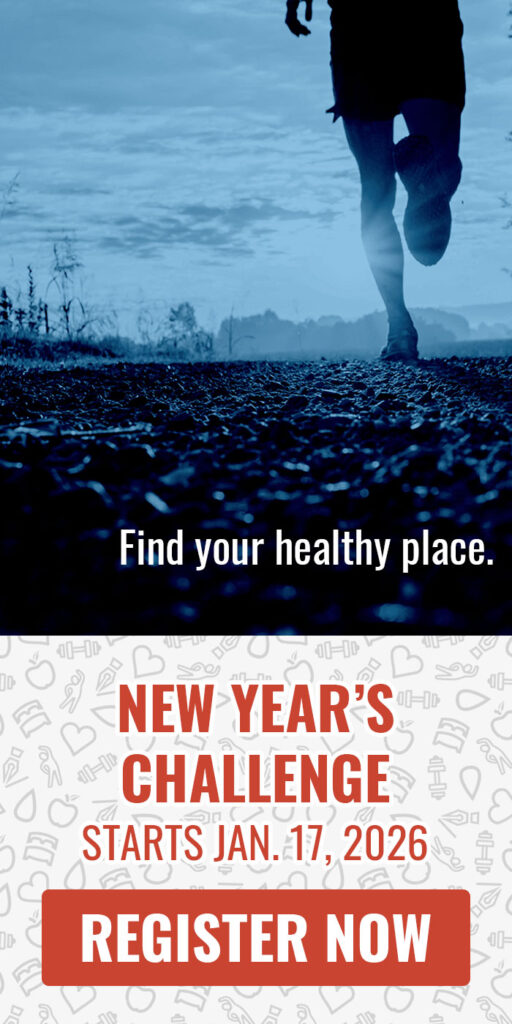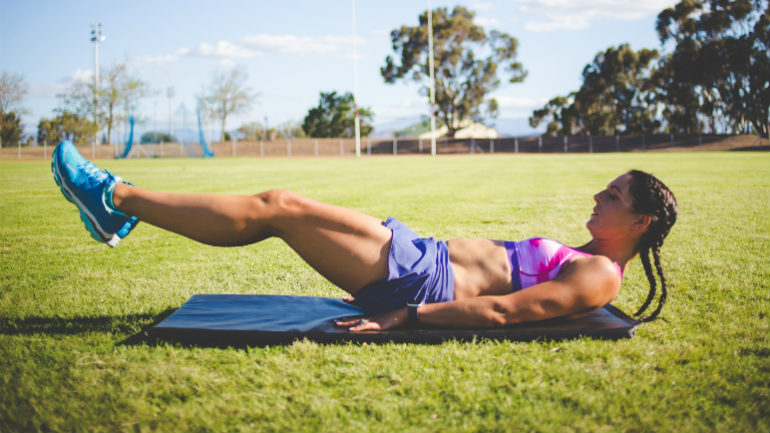 Reading Time: 8 minutes
Reading Time: 8 minutesA lot of people think exercising using only your body weight is easier, less intense, and won’t give you those “gainz” that create a perfect booty or bulging biceps. In the many bodybuilding publications, we see huge dudes holding barbells stacked to the limits with weight plates and we think this is the way to work out to get results.
Sure, lifting heavy is intense and challenging, but there are many elements to an effective workout. Lifting heavy may not turn out to be a great idea for you due to other factors that are important when performing a movement with resistance.
So many of us get obsessed with the numbers (how much we are lifting and the amount of reps). If only we could squeeze out two more reps compared to last workout, then we will get those “gainz,” right?
Perhaps not.
What if we are lifting heavy but using the wrong muscles to lift the weight? Or what if we are lifting heavy but using momentum, so we aren’t really using our muscles like we thought?
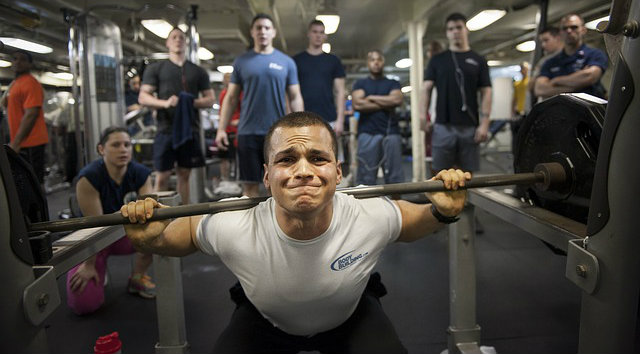
The aim of lifting weights is to put stress on specific muscles in order to force adaptations. The nervous system activates the muscles we want to use via motor neurons that signal the muscle cells to contract. Interestingly enough, when we lift heavier than we should, or we try to squeeze out those last few reps, the nervous system signals other muscles to help carry out the movement rather than just the muscles we are specifically trying to work.
The body will always want travel to the path of less resistance. Always. If there is an easier way to perform the same lift or movement then the body will gravitate that way. So, are we really working the right muscles when we lift these heavy weights?
And, if not, what are the consequences?
The Problem: Lifting Too Heavy and Injury
Aside from perhaps not achieving “gainz,” the bigger issue with lifting too heavy is the increased risk of injury. If a movement pattern is performed incorrectly, over time it can lead to wear and tear on our muscles and joints, which in turn can lead to tendonitis and stress fractures. Acute injuries are also a possibility. When the load being lifted is too much for our system, it can result in sprains and muscle tears.
In addition, lifting with incorrect form and poor posture can cause muscular imbalance, which can not only lead to injury but can further exacerbate the poor posture. Poor posture while lifting pretty much guarantees the muscles aren’t firing correctly since the body is not properly aligned. Mindlessly lifting heavy with poor form further compounds any issues from the muscular imbalances. So, it becomes a snowball effect of poor posture and poor form and injury and back again — which is a recipe for disaster.
The Alternative: Moving With Focused Attention
Don’t get me wrong, I am not negating the benefits of lifting heavy if performed with mindfulness and focused attention. But it takes time, diligence, and practice to work up to the ability to lift heavy with impeccable form and to have all the correct muscles firing.
And, in truth, the body doesn’t know kilos, pounds, or reps. All it knows is the stress we place on it and that stress doesn’t have to be a heavy weight. It can also be a perfectly performed bodyweight movement with internal tension created by focused attention.
There is quite a lot of evidence showing that when we stay focused on the movement and the contracting muscles, we work the muscles significantly more than if our minds are somewhere else. In a 2018 study published in The Journal of Strength and Conditioning Research, 21 men were hooked up to an electromyographic (EMG) device (which measures the electric potential generated by muscles), and then they performed the bench press. There were significant increases of EMG activity in the upper-body muscles of those performing the bench press with focused attention than compared with those who were performing with no focused attention.
So, what if instead of increasing the “load” on our body with additional weight plates, we increased the load through added focus?
A single-leg squat performed with attention on contracting the glute, tracking the knee, and maintaining good posture with the chest up will be more beneficial than mindlessly performing squats with heavy weight.
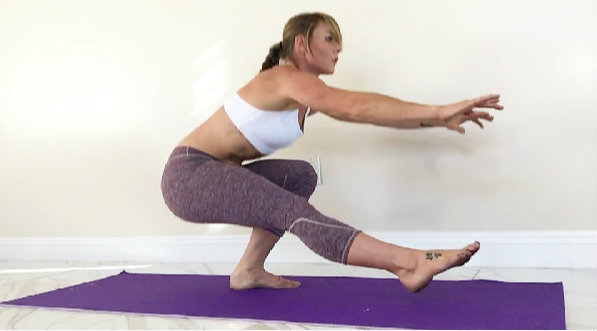
A push-up with one leg raised and bent will work the chest, glute, core, and stabilizers much more effectively than throwing around a barbell on a bench.
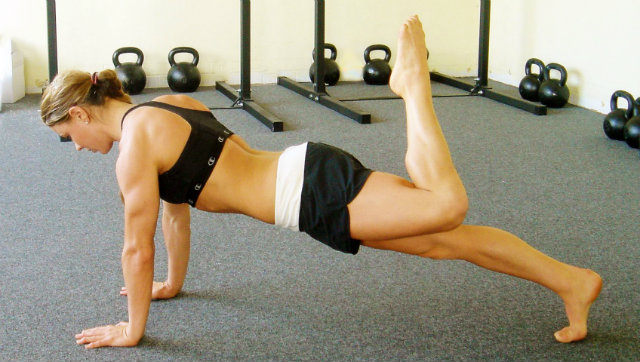
The Benefits of Bodyweight Workouts
The beauty of working with your body weight is that workouts can be done anywhere and at any time. Bodyweight workouts also allow for a lot of creativity, which can help to spice up your workout regimen. Bodyweight exercises are also inexpensive.
Here are some of my favorite exercises that I do on a regular basis. These can be done outside on a park bench at home or in the gym. Just remember: exercise with your body weight with mindfulness and focused attention to reap the full benefits.
1. Step-ups
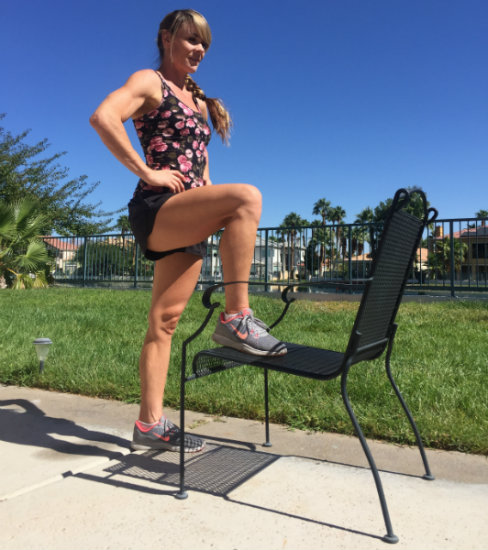
Select a bench or a chair that is between mid-calf height to knee height.
- Keep your weight through your heel of your step-up leg.
- Keep your chest up.
- Squeeze your glute when you are performing the step up.
- Lower yourself down slowly.
- Aim to do 20 each leg.
2. Push-ups on a Bench
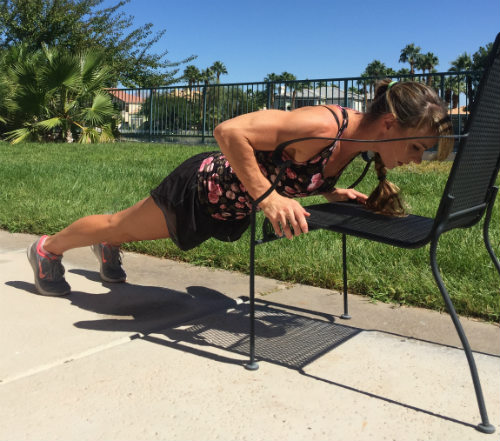
Select a bench or a chair that is between mid-calf height to knee height for best results. If you would like to scale down the exercise, you can select a higher bench that is closer to waist height or use the back of a chair.
- Maintain a straight shape from your head to your toes.
- Draw your belly button into your spine to contract your core.
- Lower yourself to the bench so your chest touches and push back up.
- Aim to do 20 reps.
3. Lunges with Back Foot on Bench
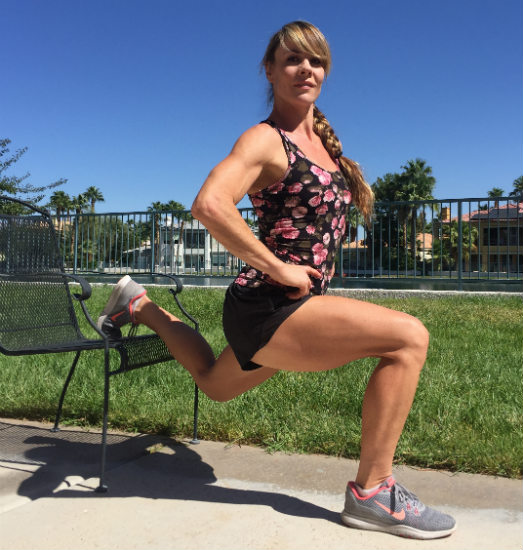
This exercise requires some balance. You can choose to do this next to a wall or fence so you can hold on as you are getting into position. Stand with one foot planted straight and about 2.5 feet forward from the bench. Prop your other foot on the edge of the bench behind you. You can leave the back of your foot on the bench or tuck your toe under.
- Make sure you can see your big toe of your front foot.
- Keep your weight through your heel of your front foot and lower yourself down so your back knee almost touches the floor.
- Focus on squeezing the glute of your front leg.
- Keep your chest up
- Aim to do 10 each leg.
4. Plank Hold with Toe Taps
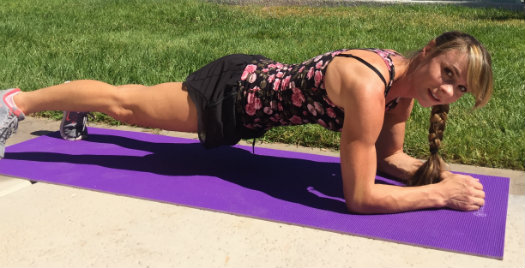
Get into a regular plank position with your elbows in line with your shoulders, abs braced, and butt down.
- Maintain a straight shape from head to toe and draw your belly button into your spine just like in the push-up.
- Lift your right leg, move it out to the side while keeping it straight, and tap the floor, all while maintaining the plank position. Bring your leg back in.
- Then bring your left leg out to the side, tap the floor and then bring it back in.
- Alternate sides while maintaining square hips and shoulders (no tilting).
- Aim for 10 toe taps each side.
5. Clapping Sit-up Hold
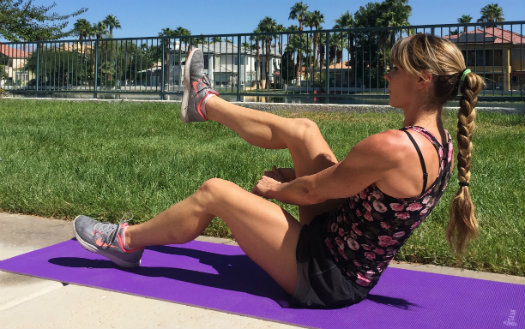
- Lean back to create tension in your abdominals and maintain a static hold in this half sit-up position so your abs are always contracting.
- Raise one leg off the ground and clap your hands under your raised leg.
- Then raise the other leg and clap your hand under your leg.
- Alternate legs and claps while maintaining tension in your abs the whole time.
- Aim or 20 reps each leg.
Keep Your Bodyweight Workouts Simple
The bodyweight exercises I illustrated above are best done in a circuit format, like this:
- 20 step-ups, each leg
- 20 push-ups on a bench
- 10 lunges with back foot on bench, each leg
- 10 plank holds with toe taps, each side
- 20-40 reps clapping sit-up hold, alternating sides
Do this 2 to 4 times through, depending on your fitness level, time available, and goals.
This is a great workout when it’s performed with focused attention. But you can also create your own simple bodyweight workouts by arranging these exercises in a different manner or adding in others that you know. Not only can these type of bodyweight workouts keep you strong, but they also help to build your core strength, increase your mobility, and increase cardiovascular fitness if performed with no rest.
Give it a try and let us know how it goes!
